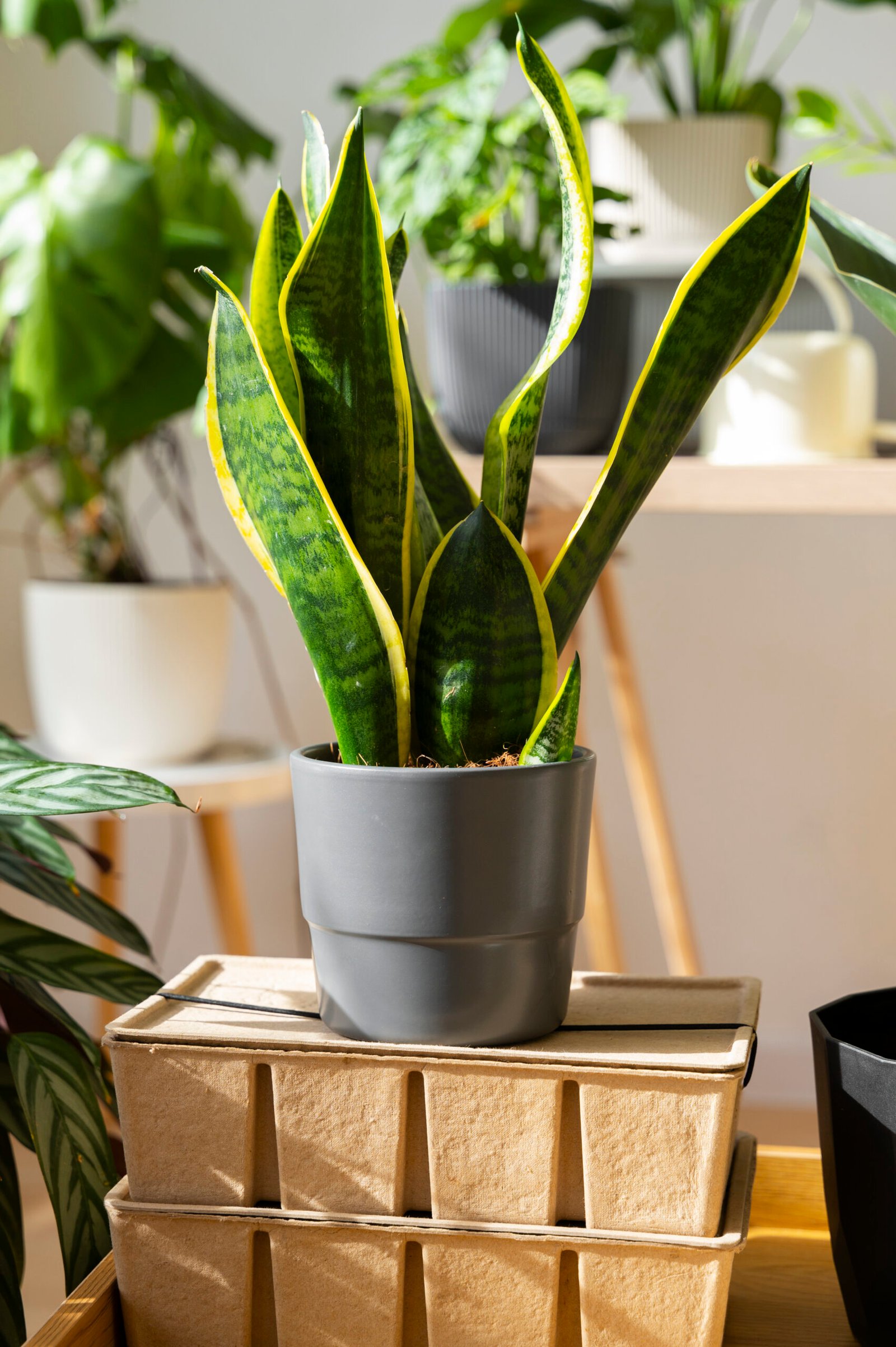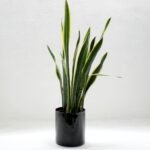Introduction to Snake Plants
Snake plants, scientifically known as Sansevieria, are a popular choice among indoor horticulturists and plant enthusiasts. With their striking upright leaves that can grow several feet tall, snake plants contribute a unique aesthetic to any space. Their foliage often features distinctive variegations in shades of green, yellow, and gray, making them visually appealing while also exceptionally easy to care for. These plants can come in various forms, including the well-known Sansevieria trifasciata, commonly referred to as the mother-in-law’s tongue.
One of the primary reasons snake plants have gained popularity is their remarkable resilience. They are particularly known for their ability to thrive in a wide range of environments, making them an excellent option for both novice and experienced plant caretakers. Snake plants can endure neglect, less-than-ideal light conditions, and variations in humidity. This adaptability is due, in part, to their unique leaf structure, which allows them to store moisture, helping them survive extended periods without watering.
These plants also have an impressive capability to purify the air, contributing to a healthier indoor environment. Research suggests that snake plants can absorb toxins such as formaldehyde, xylene, and toluene, making them a beneficial addition to homes or office spaces. The low maintenance requirements combined with their impressive air-purifying properties further enhance their appeal as houseplants. As we delve deeper into the light needs of snake plants, it becomes clear that understanding their preferences is crucial for fostering their growth and vitality. Recognizing how light impacts their overall health will equip plant owners with the knowledge necessary to nurture these resilient plants effectively.
Light Requirements of Snake Plants
Snake plants, scientifically known as Sansevieria, possess a remarkable ability to adapt to various lighting conditions, making them a popular choice for indoor spaces. Understanding the light requirements of these resilient plants is crucial for ensuring their health and longevity. Generally, snake plants thrive in indirect light but are also capable of surviving in low light environments.
Direct sunlight, while beneficial to many other plants, can be detrimental to snake plants. When exposed to excessive direct light, the leaves of snake plants may develop scorch marks or become discolored. This damage occurs because their thick, succulent leaves are not suited to intensive sun exposure. It is essential for plant owners to position snake plants in locations where they receive filtered light, such as near east or north-facing windows. Alternatively, they can be placed a few feet away from south or west-facing windows to avoid the harsh rays of the sun.
Moreover, snake plants are known for their unique ability to adapt to low light conditions, making them ideal for dimly lit rooms or offices. In such environments, these plants not only survive but can continue to grow, albeit at a slower rate. This adaptability is due to their ability to perform photosynthesis more efficiently in low light, allowing them to utilize limited resources effectively. However, it is worth noting that prolonged exposure to low light may weaken the plant, making it susceptible to diseases or pests.
Understanding the specific light needs of snake plants is vital for optimizing their care. Ensuring they are placed in the right lighting conditions will help them flourish while avoiding exposure to excessive direct sunlight. By recognizing the importance of their environment, snake plant caretakers can make informed decisions that promote the well-being of their plants.
Signs of Improper Lighting Conditions
The snake plant, or Sansevieria, is celebrated for its resilience and minimal care requirements. However, even the hardiest of houseplants can suffer from improper lighting conditions. Recognizing the signs of inadequate light is critical for maintaining a healthy snake plant. One of the most obvious indicators is yellowing leaves. When a snake plant does not receive sufficient light, the leaves may lose their vibrant green hue and begin to turn yellow. This color change signifies that the plant is unable to photosynthesize effectively, resulting in poor overall health.
Another common sign of insufficient light is leggy growth. In an effort to reach for more light, snake plants may stretch and elongate, leading to a tall, spindly appearance. This leggy growth detracts from the plant’s compact form and can make it less visually appealing. Additionally, if you notice that the leaves are leaning in one particular direction, it may be a sign that they are reaching for a light source. Ensuring your snake plant receives balanced light exposure is essential for promoting an upright, healthy structure.
Stunted development is yet another symptom of improper lighting conditions. If your snake plant is not growing as expected, or if new leaf production has significantly slowed, it might be experiencing light deprivation. Adequate light is essential for plant growth, and without it, the snake plant may enter a state of dormancy, halting its development altogether. Observing these signs—yellowing leaves, elongated stems, and limited growth—is vital. By addressing these lighting issues promptly, one can foster an environment that promotes the thriving condition of snake plants and maintains their aesthetic appeal.
Tips for Optimal Light Conditions for Snake Plants
To ensure snake plants thrive, understanding their light needs is essential. Snake plants, also known as Sansevieria, thrive in a range of light conditions, but optimal placement can significantly enhance their growth. Ideally, these plants should be positioned in areas where they can receive bright, indirect sunlight. A spot close to a window, yet shielded from direct rays, is perfect. Direct sunlight can scorch the leaves, causing damage. Thus, placing your snake plant about a few feet from a window is often a wise choice.
If natural light is insufficient, utilizing artificial lighting can be beneficial. Full-spectrum LED grow lights can be an effective alternative, particularly during the winter months when daylight is limited. These lights can mimic natural sunlight and can be set up to provide 12-14 hours of light per day. Positioning the grow light approximately 12-24 inches above the snake plant will promote healthy growth while avoiding leaf burn from excessive heat.
Another important practice is to regularly rotate your snake plants. By turning them every few weeks, you ensure that all sides receive equal exposure to light. This helps maintain balanced growth and prevents the plant from leaning towards the light source. Additionally, snake plants require different levels of light depending on the season. During the summer, they may benefit from slightly brighter light, while in winter, less light is typically needed. Observing your plant’s response to various light conditions will inform you whether adjustments need to be made to their placement or lighting schedule.
In summation, providing optimal light conditions for snake plants involves strategic placement, utilizing artificial lighting when necessary, and regular rotation to ensure even growth. Through these practical tips, you can promote a healthier and flourishing environment for your snake plants.





